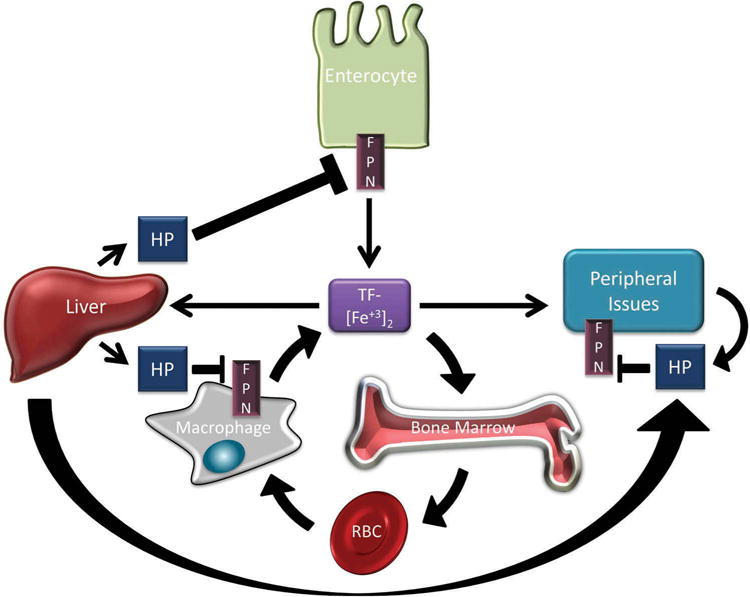Figure 1.

Overview of iron trafficking and regulation. Dietary iron is absorbed by duodenal enterocytes and exported into circulation by the iron export protein ferroportin (FPN). In circulation, iron is loaded onto transferrin (TF-[Fe+3]2) for delivery to peripheral tissues. Large amounts of iron are transported to the bone marrow for incorporation into hemoglobin during red blood cell (RBC) synthesis. Macrophages recycle iron from senescent RBCs and efflux iron back into circulation through FPN. Hepcidin (HP) is secreted peptide produced predominantly in the liver but also by cells in peripheral tissues. HP binds to FPN and targets it for degradation. HP secreted by the liver regulates systemic iron homeostasis by reducing iron absorption from the gut, impairing iron recycling by macrophages, and by reducing the release of iron from peripheral tissues. HP is secreted by peripheral tissues at lower concentrations and predominantly regulates local iron homeostasis.
